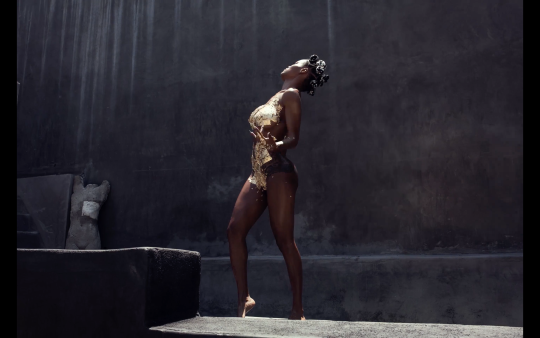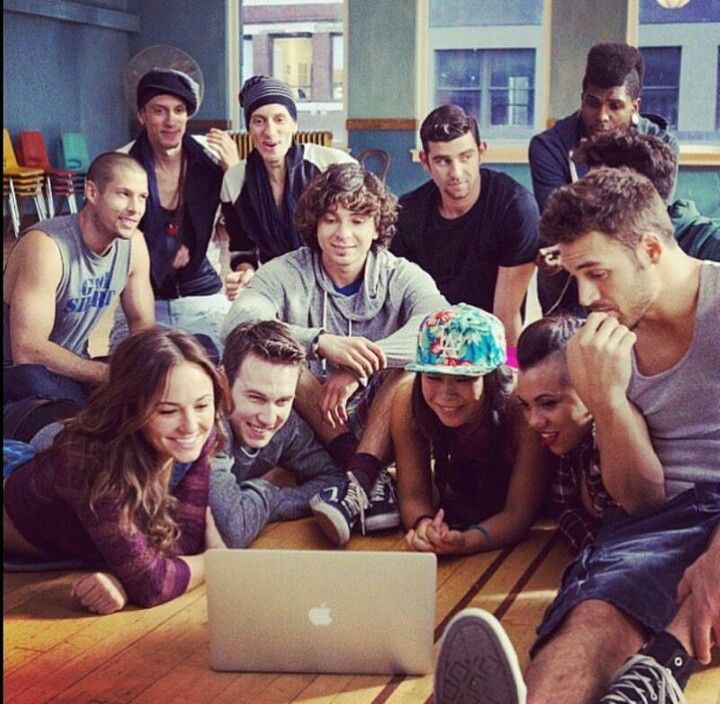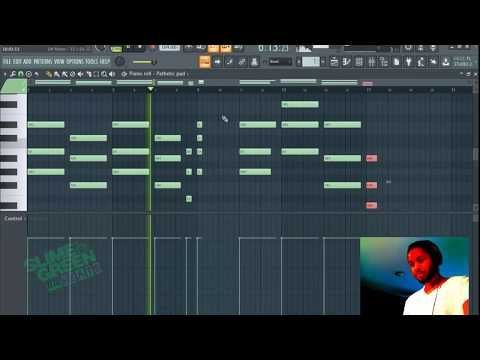How music relates to dance
How Does Music Influence the Way We Dance? • The Ballroom Dance Blog
When feeling sad, we often play music as if it was a soothing pill. Music gives us an escape from the everyday grind and allows us to forget pain and struggle. But how do musicians and dancers cross paths to create a masterpiece?
Even if we do not consider dancing for a moment, music is one of the most primitive forms of art that has altered people’s behavior and feelings for centuries. When feeling sad, we often play music as if it was a soothing pill. Music gives us an escape from the everyday grind and allows us to forget pain and struggle. But how do singers and musicians do it?
A bestselling author Daniel Levitin led research named “How musicians convey emotion through music.” The study showed that subtle changes in the timing and volume that the musicians make when playing are the key to their ability to convey emotion through music. The effects of such small changes allow the audience to perceive the tunes deeper or shallower, thus creating a different feeling in the listener.
Try to listen to those two pieces of music from one of my favorite composers- Olafur Arnalds. How do you perceive them, what feelings do they invoke in you? Please let us know in the comments below.
For Now I Am Winter by Ólafur Arnalds
Near Light by Ólafur Arnalds
To understand how music influences our dancing, we must first understand what the music tells us how it makes us feel, and how we interpret what we hear. The different instruments used, the vocals or lack thereof, and tempo all play a role in constructing our “feeling” for the music.
This topic is generally very abstract, and such is art but let’s try to put some structure into things so we can see what can happen in our bodies when we listen to different pieces of music.
We can categorize music by many different criteria, but one that I find most accurate to represent ballroom dance music is sound perception. For that purpose, we will use three main categories and two subcategories to give us a clearer distinction. Now bear in mind that this is not an exact science, and there is no “right” answer. The way you perceive a song might be different than the way others perceive it. Use this general classification as a starting point.
You might also like
For the exercise we will focus on Rumba music, but the same categorization can be used in all dances.
Three main categories:- Light, Medium, and Heavy.
Two sub-categories- Light- Medium and Medium-Heavy
What makes it LIGHT:
Tempo- the song is a little faster than a regular Rumba, which makes is sound a little bit more upbeat.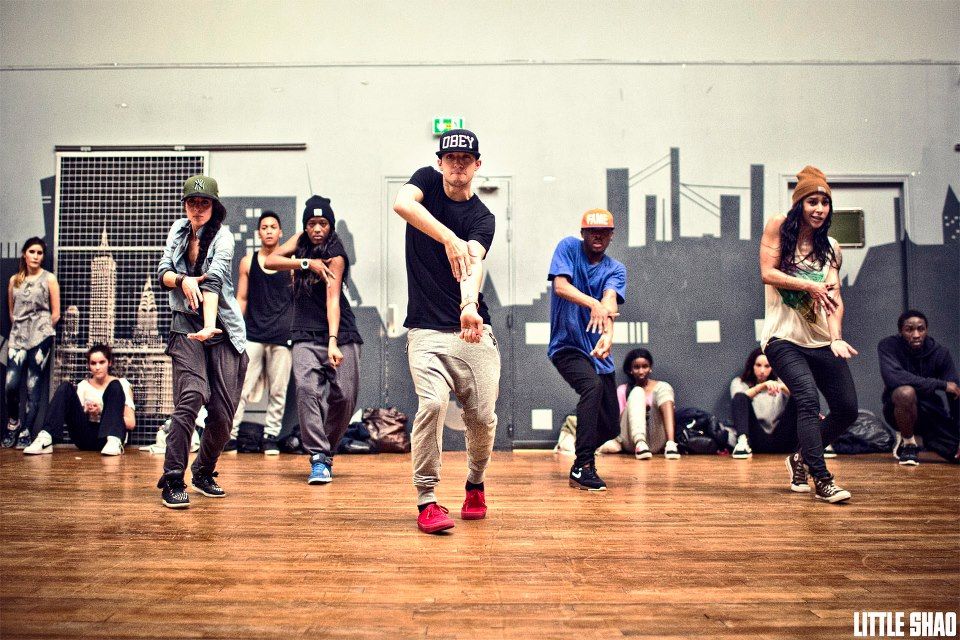
Vocals- the presence of vocals draws attention to the sound of the singer’s voice. On the other hand, the singer’s voice can be classified as a baritone that is noticeably higher/uplifting than a bass voice, giving a more grounding feeling.
Light-medium
What makes it Light-medium:
Tempo- For me, the tempo of about 26bpm will directly put this song in the light-medium category.
Instruments- Percussive instruments are used to create the basic rhythm, but throughout, we can hear brass instruments and a lot of wind instruments used all together to create an uplifting atmosphere. One suitable for the Winter Gardens in Blackpool.
Medium
What makes it Medium:
Tempo & Rhythm- the song has a regular tempo of 24BPM and a strong and clear percussive rhythm.
Instruments- Percussive instruments like maracas, conga, and clave are primarily used in this song. Still, the use of the trumpet brings a shade of lightness to the composition.
Vocals- Marc’s voice sounds very clean with little husk to it, creating a clear and lighter articulation.
Medium-heavy
What makes it Medium-heavy:
Tempo- In this song, the tempo is normal at about 25bpm, which keeps it closer to medium than heavy.
Instruments- The song utilizes the tunes of both string and percussive instruments. The percussive instruments like the conga and clave give us a strong sound making us feel more grounded.
Vocals- Olga Guillot’s voice is husky, sultry, and at times melodramatic, bringing it up towards the heavy category.
Heavy
What makes it Heavy:
Tempo- the song is a lot slower than a normal rumba. It is perfectly suitable for a show or a practice song but not for a competition. This tempo creates a feeling of depth.
Instruments- gentle guitar tunes help the singer carry out her message to the audience. Spanish guitar can create a deep, dark, bass-like sound. Light sounding percussive instruments like the triangle are missing.
Vocals- Even without knowing what the singer is singing about, you can notice a sense of drama and pain in her voice.
So far, we have discussed ways to categorize the music and what influences that categorization like the vocals or the tempo. We can now move onto exploring ways in which this information can guide us to adjust our dancing to the music, so we become one with it. That is the whole point, right? When the musician cannot express themselves any further, the dancer comes to help.
That is the whole point, right? When the musician cannot express themselves any further, the dancer comes to help.
Understanding the music is the first step to creating a movement that embodies the sounds. We separated the music in three major category - light, medium, and heavy. When we think about the words we used to describe the music, they can easily be used to describe weight. We can say- this bag is heavy.
Establishing the connection between music and weight will allow us to further explore the link between the music and our center of gravity's position throughout our movement.
As you can see from the graph, light music will correspond to a higher center of gravity position, which will make the range of motion in actions like settle in rumba shallower. This corresponds to the fact that lighter sounding songs will be faster in speed; therefore, there is a lack of time to finish a big and deep settling action.
The medium sounding rumba songs are represented in yellow on the graph. Those songs will prompt us to adjust our gravity centers to the middle position, around the waistline. The range of motion should be comfortable for everyone to perform, neither reaching a deep settling action nor rising much above the waist level.
Perhaps the most challenging, requiring a big range of motion, flexibility, and exquisite body control, is the center's low position to perform to heavy music. Also heavy music is very often slow and very emotionally charged. You can see an example in Sergey and Melia’s rumba show. If they were to dance to this music uplifted, happy and chirpy, that would create a dissonance between the movement and the music.
NOTE: Those recommendations are relative to everyone. I find that they work best for most basic actions and routines based mostly around basic rhythm. Open level routines are generally complex with different dynamic characteristics designed to tell a story or highlight specific strong features of the dancer; however those should also be connected to the music at all times.
When talking about describing and perceiving music, one can come up with so many words to describe it. Why? Because it is not tangible, it is a perception, and thus no one can truly agree on what a piece of music "sounds" like. What you can do is use words that make sense to you to translate the music to your body. I can recall some of my teachers use to describe Foxtrot piece of music as 'autumn.' No matter the words, the important part is to remember that we need to relate the musician's intention through our bodies to the world around us. Leaving you with an excellent video example from the movie Nine in which the music is happily married to the dance! Enjoy!
Ballroom Dance insights you won’t delete.
Delivered to your inbox.
NO SPAM, we hate it too.
Success! You are on the Ballroom Dance Express!
Oops! Something went sideways while submitting the form.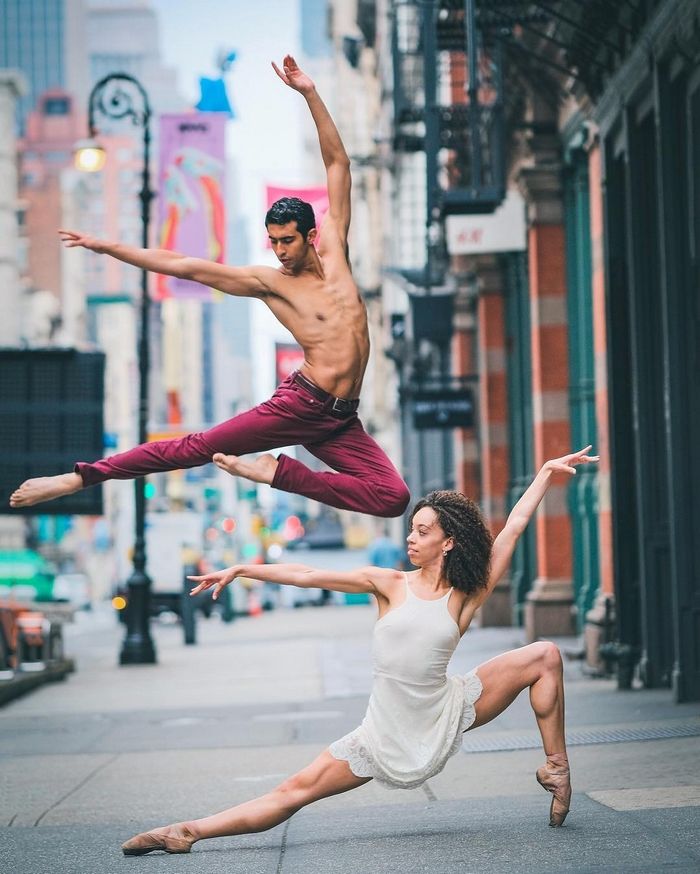
The Relationship Between Dance And Music || Dotted Music
By Roger Brenshofl | January 2, 2014
TTry dancing without music and you will end up looking like a ludicrous caricature of someone like the late Patrick Swayze who held one and all spellbound dancing with Jennifer Grey in Dirty Dancing. Whether you are listening to one of Beethoven’s 9 symphonies or are subjected to a rap song by Eminem, you might not be able to sit still for a long while. You would be energized into moving your body parts and some dance form will not only overtake you but flow out of you.
Scientists have known for some time that even a fetus in the womb can hear music and react to it. It starts moving its limbs in an attempt to dance though it does not even know what dance is. In a local experiment, children between 1 and 2 years of age were made to listen to Credence Clearwater Revival’s “Heard it Through the Grapevine”. Guess what happened? Within a minute of listening to the insistent drums and guitar riffs, the babies started to move in synchronicity with the song. They fell, as they were bound to, but, resumed immediately even as they were sitting or lying. This proves that one does not have to learn dancing to break into a spontaneous dance routine. All it takes is for the music to play.
They fell, as they were bound to, but, resumed immediately even as they were sitting or lying. This proves that one does not have to learn dancing to break into a spontaneous dance routine. All it takes is for the music to play.
Image credit: kidsyogaguide
The two art forms, music and dance, together seem to create an emotional quotient, always complementing each other. Researchers at Dartmouth had two groups of very different people taking part in a complicated experiment that was to decide the connection between music and dance: College students from the U.S. and villagers from a Cambodian village. They found that an emotional reaction was the result of being subjected to music in both the groups. Dancing erupted in them both irrespective of their background.
While dancing is the most natural outcome of music, there are other emotions that can result too. For example, songs by Bob Dylan et al had a whole generation seething with anger. Did they dance as well to these songs? They certainly did.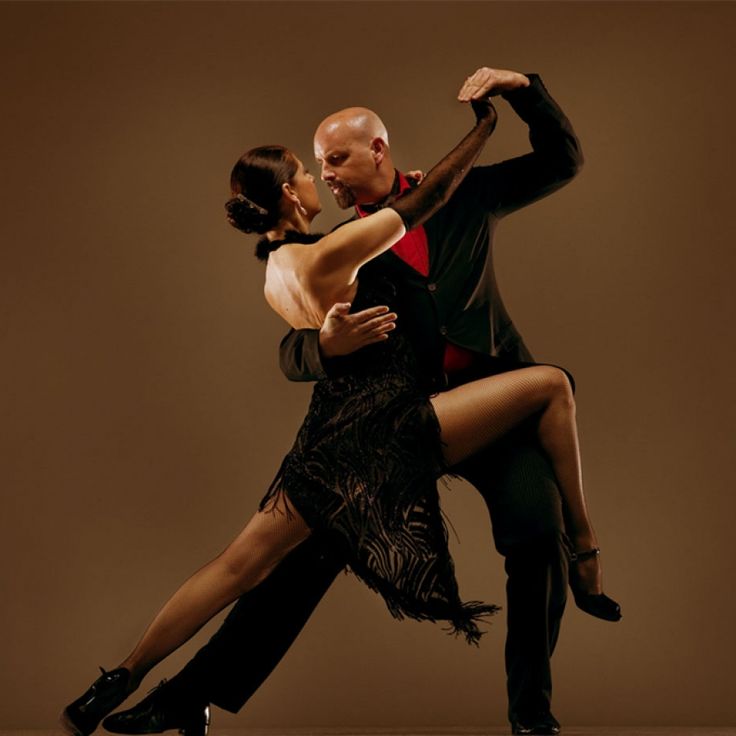 The many concerts in which hundreds of songs with themes like the futility of war, the essentiality of peace and brotherhood of man had millions dancing to the tunes.
The many concerts in which hundreds of songs with themes like the futility of war, the essentiality of peace and brotherhood of man had millions dancing to the tunes.
Didn’t Woodstock have people dancing together around the country if not around the world? In 1979, Jesse Colin Young had put together an anti-nuke rally at the Battery Park, New York. The initial anger in the people on the stage and the audience had to give way to sanity. And, sanity gave birth to dance. Chet Powers’ beautiful song “Get Together” sung by Jesse, Graham Parsons, Steven Stills and others had the record crowd of 250,000 joining in the singing and swaying with perfect timing.
We can deduce from the above narrations that music, be it a lullaby sung to a baby in the cradle or a soldier with his gun marching in a parade ground, can make you dance. We can also see that music can produce emotions and that emotions can find an outlet in dancing.
Roger Brenshofl manages the branding identity of funyo and is also their activity curator. He is passionate about what he does and loves to include visuals for communicating each campaign. One of his major responsibilities is managing content marketing and redesigning the response forms according to client feedbacks.
He is passionate about what he does and loves to include visuals for communicating each campaign. One of his major responsibilities is managing content marketing and redesigning the response forms according to client feedbacks.
Relationship between music and dance | choreograph.COM
In the aesthetic education of the younger generation, an important role is given to art, in particular choreography. Dance art in our country is gaining more and more popularity every year, becoming one of the most effective factors in the formation of a harmoniously developed, spiritually rich personality.
Dance art is a mass art. It is available to everyone. Tens of thousands of children take part in the work of choreographic circles, ballet studios. Thanks to systematic choreographic upbringing and education, students acquire a general aesthetic and dance culture, and the development of dance and musical abilities to a more subtle perception of professional choreographic art.
Dance is a stage art that requires careful preparation, virtuosity of movements, daily polishing of dance technique. In these classes, children develop musicality and rhythm, which is of great importance for the aesthetic and physical education of children. Music and dance are closely related to each other. Along with dance, music is one of the factors of aesthetic impact on children.
Simple, accessible music awakens the imagination, captivates, helps to overcome difficulties.
Dancing, imagery, clear melody, clear rhythmic pattern - these are the necessary qualities of dance music for children. The content and form of music must correspond to the content and form of dance. The musical development and the formation of the student's artistic taste depend on the quality of the musical material used in the work and its performance.
1. Aesthetic education as a means of personality formation.
The ability to emotionally respond to the beautiful, love and appreciate it makes a person's life more meaningful, bright and rich. It has a great influence on the formation of the human personality and, first of all, its moral character. Behavior based on an understanding of the beauty of ethical norms and rules is more durable and sustainable. “It is one thing to be attracted by a gift, reward, premium or some kind of benefit for an individual,” said A.S. Makarenko, “and another thing is to be attracted by the aesthetics of an act, its inner essence.
It has a great influence on the formation of the human personality and, first of all, its moral character. Behavior based on an understanding of the beauty of ethical norms and rules is more durable and sustainable. “It is one thing to be attracted by a gift, reward, premium or some kind of benefit for an individual,” said A.S. Makarenko, “and another thing is to be attracted by the aesthetics of an act, its inner essence.
The purpose of aesthetic education is the formation of an aesthetic ideal among the younger generations, which summarizes the most important and essential aesthetic ideas and views of a person.
The upbringing of the aesthetic ideal presupposes, first of all, the development of aesthetic feelings and aesthetic perception in students. The same phenomena of reality and art can be seen, felt and perceived in different ways. Some can admire the beauty of nature and the paintings of artists for hours, while the latter are completely indifferent to both. The development of aesthetic perception is impossible without enriching students with aesthetic impressions, without developing their emotional, personal attitude to what is perceived. It is necessary to educate students in emotional responsiveness, to draw their attention to the beauty in the surrounding life and everyday life, in works of art.
It is necessary to educate students in emotional responsiveness, to draw their attention to the beauty in the surrounding life and everyday life, in works of art.
The richness and value of aesthetic feelings and experiences lies not in quantity, but in their depth and stability. A deep feeling determines all the behavior and activities of a person, testifies to the integrity of his nature.
“I don't know how to hate half or love half,” said F.E. Dzerzhinsky, - I do not know how to give only half of my soul. I can give my whole soul or give nothing.”
Unfortunately, in life you can meet people who, under the first impression, are ready for any feat or selfless act, but their feeling cools down very quickly, and at the first difficulties they refuse to achieve their goal.
Along with the formation of the depth and constancy of aesthetic feelings, one should pay attention to their adherence to principles and ideological orientation. The education of aesthetic feelings is closely connected with the formation of one's spiritual image of a person and, first of all, the correct aesthetic views, beliefs and tastes.
It is important not only to be able to see and feel the beauty in life and art, but also to judge it, to give it a correct assessment. A musically unpretentious person may not appreciate a highly artistic piece of music, on the contrary, give a high appreciation of a weak creation from an artistic point of view. Therefore, one of the main tasks of aesthetic education is the formation of aesthetic views, judgments and tastes among students. The absence of correct judgments about the beautiful or "bad" tastes is far from a harmless thing. Often complex ideas about what is beautiful and ugly lead to immoral acts and perverted relationships between people.
“There are no comrades for the taste and color,” says an old Russian proverb. One cannot demand from people exactly the same assessment of beauty in life and art. However, among members of society who share the same worldview, differences in tastes will not go beyond their aesthetic ideal. Tastes are determined not only by the level of aesthetic education, but by the moral and political image of the individual.
The formation of aesthetic judgments and tastes is closely connected with the education of aesthetic activity in students. “Man is an artist by nature,” said A.M. Gorky. - One way or another, he strives to bring beauty into his life. A student should not only be a contemplator of beauty, be able to understand and appreciate it, but also actively bring beauty into everyday life; to make it aesthetically expressive and meaningful, to fight against everything ugly and ugly. To this end, it is important to systematically involve students in active work to improve and aesthetically transform the environment, to educate them in aesthetic skills and habits that enable them to bring elements of beauty into life, everyday life, educational and work activities.
An important task of aesthetic education is the development of students' creative interests and abilities in a particular area of art. L.N. Tolstoy wrote that every person has a high need to serve art and that this need must be satisfied.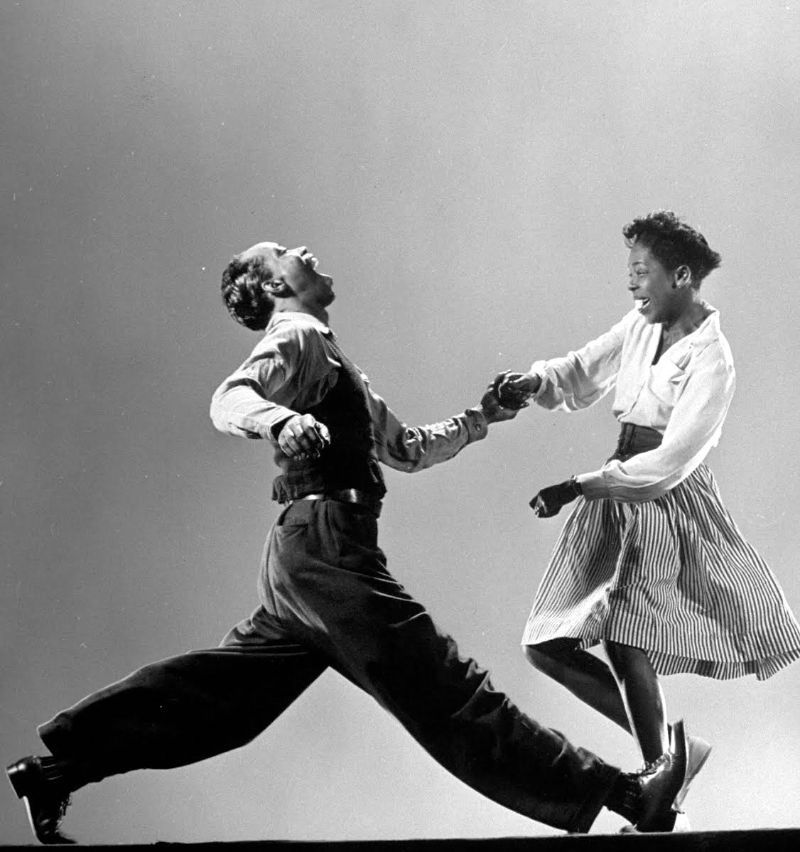 In our country, where working people have access to all kinds of art, the dreams of the great Russian writer are becoming reality. Hundreds of thousands of people are engaged in amateur art circles, joining serious art. The development of creative abilities helps to enjoy art, creates the prerequisites for further improvement.
In our country, where working people have access to all kinds of art, the dreams of the great Russian writer are becoming reality. Hundreds of thousands of people are engaged in amateur art circles, joining serious art. The development of creative abilities helps to enjoy art, creates the prerequisites for further improvement.
Aesthetic education of students takes place in the process of all educational work. Educational work, industrial practice, socially useful work, hiking in the native land, the culture of work and life - all this, along with theoretical preparation for the profession and the formation of the moral character of students, can also be used for their aesthetic education. However, the main means of aesthetic education, which allows the most successful solution of all the above tasks of aesthetic education, is art.
“Neither music, nor literature, nor any other form of art in the true sense of the word,” said P.I. Tchaikovsky - do not exist for simple fun, they meet the deeper needs of human society than the extraordinary thirst for light entertainment.
Truthfully depicting reality, creating vivid images of positive images of heroes, literature and art form students' aesthetic tastes and views, teach them to understand beauty in works of art and in life, and contribute to the development of artistic needs and inclinations.
2. History of choreography.
The history of the formation of choreographic art is the result of the evolution of human culture, the social characteristics of each time, this is the history of the evolution of folk dance art.
The history of the art of dance goes back to ancient times. At the dawn of its existence, mankind discovered ways to express thoughts, emotions, actions through movement. The dance is silent. A word does not sound here, but the expressiveness of the plasticity of the human body and musical rhythms and melodies turns out to be more powerful, and therefore the dance language is multinational and understandable to everyone. At first, mankind put their ideas and beliefs into the dance - the dance was a ritual. In the dance, a man lured from the unknown gods a happy hunt, a plentiful harvest, the salvation of ailments. Such ritual dances can still be seen among some of the primitive tribes of Australia or the American Indians. In our country, in the dances of the Koryaks, Ostyaks, and Chukchis, echoes of the ancient rituals of the ancestors live, too, “conjuring” prey dances - a bear, a seal, a fish ...
In the dance, a man lured from the unknown gods a happy hunt, a plentiful harvest, the salvation of ailments. Such ritual dances can still be seen among some of the primitive tribes of Australia or the American Indians. In our country, in the dances of the Koryaks, Ostyaks, and Chukchis, echoes of the ancient rituals of the ancestors live, too, “conjuring” prey dances - a bear, a seal, a fish ...
As time went on, mankind more and more energetically discovered the secrets of the universe, and dances lost their original "magical" purpose. Now they expressed the love of freedom characteristic of the people, cheerfulness, optimistic perception of the real world. Therefore, it is not for nothing that dance has always been unloved by cruel churchmen. However, it turned out to be much stronger and more viable than obscurantism and prejudice. The dance survived, triumphed and expanded its scope.
A whole art has been revived - choreography. She, in essence, having no system of records of movements, passed on orally, like a baton, all the valuable and most expressive that was throughout her history.
As a treasury of creative imagination people keep and pass on their national dances to the next generations. They were created and crystallized over the course of new centuries.
In a revised form, national dances were transferred to parquets: the nobility danced at court balls. Actors danced in interludes to "bring animation" to the course of serious dramatic and operatic performances. The stage dance was enriched by the technique coming from the actors, acrobats, buffoons. So, more than four centuries ago, ballet was born.
Since the origin of dance belongs to the origins of human culture, and the ability to systematize all the huge number of movements appeared only in the 17th century, we can say that such a long path of development and a careful selection of expressive means speak of the objective aesthetic value and vitality of this art.
The origins of Russian choreography originate in mass round dances, in which various forms were formed: dance, pair dance, improvisational round dance, in which the lead dancer invented the movements, and the rest repeated; over time, the most interesting, expressive movements, drawings were selected and developed and imprinted in various dances dedicated to life events - rituals dating back to pagan times, weddings, seasonal holidays.
The creative life of choreographers of those years was influenced by conflicting trends that also took place in other forms of art. So, for example, “music, which gives impetus to the creative thought of the director, underwent strong rhythmic and harmonic changes during these years,” writes Bogolyubskaya M.S.
J. Dalcroze, who captivated many European countries with his system of rhythmic education, also had a great influence on the development of ballet, although he had opponents among choreographers. He was able to look at rhythm as an internal manifestation of the spiritual life of a person through physical action, carefully developed a system of rhythmic education.
Rhythmic education was adopted by K.S. Stanislavsky, who attached great importance to the rhythmic development of the actor. Rhythmic lessons were studied by future choreographers.
Thus, the art of dance developed and improved. History shows that the path to dance art goes through psychology and artistic disclosure of characters, through the musical and dance image.
3. The role of musical and rhythmic activity in the aesthetic development of children.
DOWNLOAD the full material can be found here
Author: S.A.Drozdova
The material is posted on the site within the framework of the “Publications” project
Relationship between music and dance
Music and dance.
Choreography and music are deeply related, the imaginative nature of these arts is largely similar. Music is based on the expressiveness of the intonations of human speech, and the choreography is based on the expressiveness of the movements of the human body. At the same time, none of the other types of art reproduce specific everyday intonations and movements. The commonality of figurative nature creates the possibility of combining music and choreography into a single work of art. Music enhances expressiveness in dance plastic, gives it an emotional and rhythmic basis. When staging a performance, the question arises of the relationship between choreography and music, their unity, correspondence, the expression of one in the other - one of the generally recognized criteria for the artistry of dance art. The dance does not reproduce the music thoroughly, it exists on its basis, is performed in synthesis with it and expresses it. This is in accordance with the figurative nature of the dance, the figurative nature of the music. This applies not only to the nature of the mood (cheerful, sad, etc.), but also to the expression of elementary feelings, complex images that can be in music and dance. Musical dramaturgy is based on emotionally expressive themes, they correlate with each other, develop, a contrast of these themes can be observed, music can convey the process of a gradual increase in a state, compare 2 different states, turn one of them into another, discover their relationship and differences. For this, in music there are a number of examples of articulation, fragmentation, variation, contrast, reprise, etc.
The dance does not reproduce the music thoroughly, it exists on its basis, is performed in synthesis with it and expresses it. This is in accordance with the figurative nature of the dance, the figurative nature of the music. This applies not only to the nature of the mood (cheerful, sad, etc.), but also to the expression of elementary feelings, complex images that can be in music and dance. Musical dramaturgy is based on emotionally expressive themes, they correlate with each other, develop, a contrast of these themes can be observed, music can convey the process of a gradual increase in a state, compare 2 different states, turn one of them into another, discover their relationship and differences. For this, in music there are a number of examples of articulation, fragmentation, variation, contrast, reprise, etc.
Thanks to the logic of musical development, an emotional image is born, which is plastic in dance. Choreography and music are related, as arts that develop in time, therefore, in both arts, rhythm plays a huge role in creating an image. The coincidence of dance and music in the nature of their movement, pattern, plasticity lies in the correspondence of the tempo, meter, rhythm of the dance. The dance corresponds to the music in content and form. This correspondence begins with the coincidence of the movement of dance and music (its tempo, metro-rhythm).
The coincidence of dance and music in the nature of their movement, pattern, plasticity lies in the correspondence of the tempo, meter, rhythm of the dance. The dance corresponds to the music in content and form. This correspondence begins with the coincidence of the movement of dance and music (its tempo, metro-rhythm).
The tempo of music - the speed of its sound, has a certain meaning for the dance:
It sets the general tempo of the dance, its changes (changes, accelerations, decelerations). But in modern choreography, techniques are used to build a contrasting dance tempo in relation to the musical one. However, these techniques are used in separate fragments of the dance as additional means. Rhythm - harmony, proportion, rhythm in music - an organized sequence of sounds, durations. Rhythm in choreography is strictly natural and unstressed. From the mismatch of rhythmic and metric shares, syncopation occurs. Rhythm in dance serves as a formative element.
The most essential properties of European dance music of the 15th-16th centuries owe to the union of music and choreography. At the compositional level, the unity of musical and choreographic sequences can also be expressed in the smallest details, for example: the cabriole at the end of the dance figure often coincides with the trill of the instrument. Back in the 18th century, Noverre said: “Well-written music should paint, should speak. Dance music should be the libretto that defines and establishes the movements and actions of the dancer.” Noverre's dreams came true only in the 19th century, in ballets created to the music of P.I. Tchaikovsky, choreographers M. Petipa and L. Ivanovsky. Tchaikovsky's music, while remaining dance-like, acquired independent artistic significance, lyrical depth, and dramatic expressiveness. Tchaikovsky is an outstanding melodist, therefore, the opinion is asserted that the future in the development of ballet is mainly for melody, but this is not entirely true.
At the compositional level, the unity of musical and choreographic sequences can also be expressed in the smallest details, for example: the cabriole at the end of the dance figure often coincides with the trill of the instrument. Back in the 18th century, Noverre said: “Well-written music should paint, should speak. Dance music should be the libretto that defines and establishes the movements and actions of the dancer.” Noverre's dreams came true only in the 19th century, in ballets created to the music of P.I. Tchaikovsky, choreographers M. Petipa and L. Ivanovsky. Tchaikovsky's music, while remaining dance-like, acquired independent artistic significance, lyrical depth, and dramatic expressiveness. Tchaikovsky is an outstanding melodist, therefore, the opinion is asserted that the future in the development of ballet is mainly for melody, but this is not entirely true.
In the 20th century, scientists confirm the primacy of rhythmic phenomena for human life and all living things. According to the famous Belgian conductor Defoe, asymmetric fractional meters contain unlimited possibilities for the implementation of movements. In modern music, in synthesis with such expressive means as melody and rhythm, harmony, coherence, harmony are increasingly manifesting themselves. There is no dance without sound; in arts such as music and choreography, the nature of "humanity" is different than in dramatic art or a literary work. Music and choreography have the ability to penetrate into the depths of the soul, revealing something universal. Choreography is located, as it were, in the middle, between music and poetry. At the time when the dance is combined with music, such musical and dance forms as the suite, the pastoral interlude flourish. In order to cultivate a culture of movement, to avoid a formal approach to simple exercises, you need to choose very good music for conducting classes so that the beginnings of the richest emotions and moods bloom in the dances performed.

Conclusion: choreography and music are internally related. Music is a necessary and organic component of a choreographic work. She gives him an emotional and figurative content, influences its dramaturgy, structure and rhythm of the dance action.
In the aesthetic education of the younger generation, an important role is given to art, in particular choreography. Dance art in our country is gaining more and more popularity every year, becoming one of the most effective factors in the formation of a harmoniously developed, spiritually rich personality.
Dance art is a mass art. It is available to everyone. Tens of thousands of children take part in the work of choreographic circles, ballet studios. Thanks to systematic choreographic upbringing and education, students acquire a general aesthetic and dance culture, and the development of dance and musical abilities to a more subtle perception of professional choreographic art.
Dance is a stage art that requires careful preparation, virtuosity of movements, daily polishing of dance technique.
